Security is not a one time installation but a 24-hour engagement. In Morocco, you want vigilance not gaps in security. You want solution clarity and quick alerts as well as complete coverage not blind spots regardless of whether your business is a shop, office, clinic, warehouse, or a school. That is why increasingly more business owners seek the answer to the same crucial question:
AI CCTV vs Traditional CCTV.
Which system in the actual sense provides more protection? Which is the more economical in at your end? Which will best suit how your team will work on a day to day basis?
In this guide, we bring it down into easy to understand language. You will discover how each system operates, what they are good at, what they lack and, most importantly, what will make sense to businesses in cities such as Casablanca, Rabat, Tangier, Marrakesh, Agadir, and more.
It is not only a technical decision but this influences your safety, your budget and the trust of your team and customers. That’s why the debate between AI CCTV vs Traditional CCTV is worth taking a closer look at.
AI CCTV vs Traditional CCTV: Quick Answer
If you need real-time alerts, fewer false alarms, and useful data, AI CCTV vs Traditional CCTV is not a close match. AI wins most use cases. Traditional CCTV can still help as a basic recorder or a low-budget start. Yet AI tools cut risk sooner, save time every day, and turn video into actions. For many Moroccan businesses, the long-term win is clear: choose AI for daily operations, and use traditional only when you need a simple record of events.
How Each System Works (Simple View)
Traditional CCTV in one minute
A conventional camera stores video It transmits the flow to an NVR/DVR. You record material on disks. Managers or guards analyse video after an incident It is easy, common and low cost to launch. Nevertheless, it is not likely to give you a warning during a problem instance. Response takes time and is human led.
AI CCTV in one minute
The AI is used to analyze video as it is streaming along through an AI camera/practical application or an AI enabled recorder. It identifies individuals, vehicles, cross lines, loitering, PPEs on/off and blocked exits, etc. It makes notifications on your phone, VMS, Teams mailbox, or a wall screen. It removes noise, which means fewer false alarms to your staff, resulting in prompt responses.
What Changes in Real Life
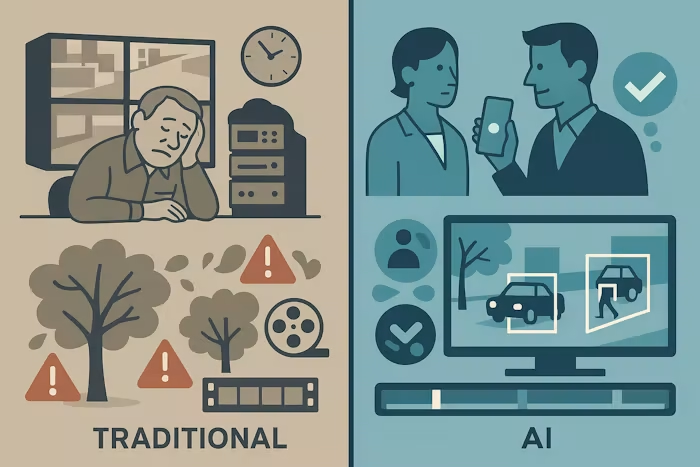
Detection and response
Traditional: records first, reviews later. AI: detects now, alerts now. Therefore, AI reduces “I only found this the next morning” moments.
False alarms
Traditional: motion = alert, even a waving tree. AI: person/vehicle filters reduce junk alerts. So, staff does not mute the system out of frustration.
Staffing
Traditional: you need eyes on screens for hours. AI: the system watches for you, then pings you when it matters. As a result, supervisors can focus on customers and operations.
Evidence quality
Traditional: hours of footage to scrub. AI: smart bookmarks, object search, and timelines. Consequently, investigations finish faster and with fewer gaps.
Costs and ROI (Upfront vs Lifetime)
Upfront cost
- Traditional: lower. Cheap analog/HD cameras and DVRs exist.
- AI: higher. Smart cameras, better lenses, and AI recorders cost more.
Operating cost
- Traditional: higher over time. Manual monitoring, longer investigations, and missed incidents add up.
- AI: lower over time. Faster response, fewer losses, and fewer guard hours.
Storage
- Traditional: records everything at fixed bitrate. Storage grows fast.
- AI: can record on events, use dynamic bitrates, and archive smart clips. Storage grows slower for the same coverage.
Bottom line
Across one to three years, AI CCTV vs Traditional CCTV usually flips the cost curve. AI costs more on day one but wins on year one.
Use Cases by Sector in Morocco
Retail and malls
Shrinkage eats into the margins. AI counts crowd, detects till-line-skipping and alerts shelf-sweeps. It also enables you to plan staff for peak times.
Logistics and warehouses
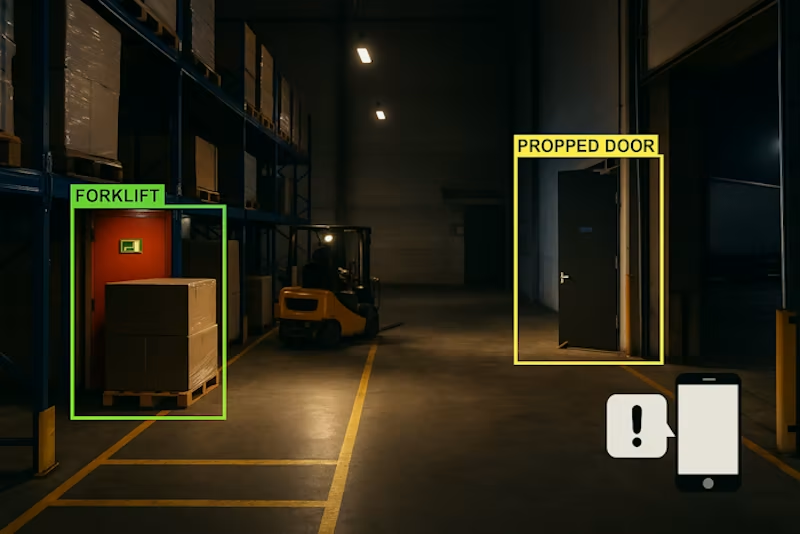
Forklift aisles require eyes. AI patrols locks out fire exits, identifies door propping and alerts on overnight motion near docks. That keeps flow clean and primary.
Clinics and hospitals
You will require security and seclusion. It monitors restricted zones, follows falls risks in corridors and assists in the management of visitorial flow. In the meantime, there are access control links which keep the sensitive rooms safe.
Offices and banks
The following can go hand and hand with AI, badge systems, and visitor logs. It detects tailgating, monitors lobby overcrowding and enables incident timelines for audit.
Schools and campuses
In children play areas and gates we need fast call alerts. AI assists in the detection of trespass after hours and the monitoring of entry points in reducing the manual screen time.
Image Quality, Lenses, and Light
Conventional systems may be set at the lowest resolutions and standard lenses. AIs drive toward higher-quality sensors since an AI model can do more with clean pixels. Blown highlights at doors and windows are eliminated with wide dynamic range (WDR) in dim light. With AI CCTV vs Traditional CCTV, you feel this at sunrise, dusk, and in warehouses with mixed lighting. Clear frames translate from better detections to better evidence.
Network and Storage Choices
- Edge AI: The camera runs AI on-board. It reduces server load and WAN use. For many Moroccan sites with shaky uplinks, this is ideal.
- Server/VMS AI: A central server runs models for many cameras. This suits large campuses that want unified search and policy control.
- Cloud backup: Keep a slim event archive off-site. Storms, theft, or fire will not erase your only copy.
- Smart retention: Keep 30 days for most streams, but 90 days for cash desks and loading bays. AI tags help you store what matters longer.
Alerts That Help, Not Hype
False alarms are time consuming Excellent alerts lead to initiative With AI CCTV vs Traditional CCTV, AI wins because it sends the right alert to the right person at the right time. Alerts on the queue length may be received by a store manager A safety officer can receive alerts on the missing of helmets. Night motion is taken on a side gate by a guard. Since alerts are assigned to roles, teams donât have to wade through noise.
Safety, Compliance, and Trust
Customers and employees alike on Morrocan sites have high expectations pertaining to fairness. Be clear with signing in at entrances. Tell the things you monitor and why. Control Live views to trained roles only. Export/share of logs. Blur every faces in clips used for train. Maintain short policy in simple Arabic & French. Then train your team on. With AI CCTV vs Traditional CCTV, AI makes logs and reports easier, which helps audits and builds trust.
Data You Can Actually Use
Traditional video is raw, silent data. AI video turns into useful charts and lists:
- Dwell time in aisles
- Heat maps by hour
- Entry/exit counts by door
- Repeated late-night visits to a fence line
- PPE compliance rates by zone
Because managers can spot patterns, managers resolve problems before they become bigger. Then because the system improves with events it becomes better.
Morocco-Specific Tips
There are power cuts. UPS PoE switches at critical racks. Put backup reserve, at least 20 minutes of battery on recorders and key cameras. The outside runs have conduit protection. When it comes to remote sites, 4G/5G failover is worth it. There is also the fact that walls and courtyards differ in city so do some walking on the site in the night before passing your signature.
You are going to notice glare, shadows, and blind angles a PDF drawing conceals. These field habits matter more than brand logos in the AI CCTV vs Traditional CCTV debate.
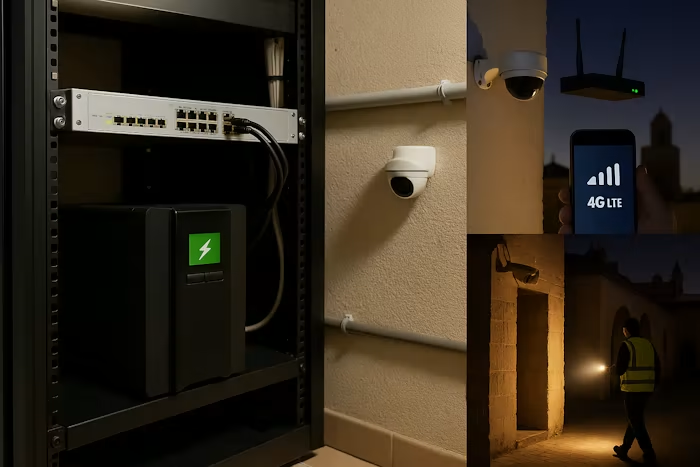
Where Traditional Still Makes Sense
- Very small shops with one or two cameras
- Sites that only need proof after the fact
- Temporary installs on a tiny budget
- Rooms with zero network access by policy
Even then, add one AI channel for the highest-risk door. A small step shifts AI CCTV vs Traditional CCTV closer to your side.
Common Buyer Mistakes (And Easy Fixes)
- Buying cameras before listing risks → write five risks per zone first.
- One profile for all zones → make separate rules for docks, tills, gates, and corridors.
- Default passwords → rotate passwords on day one.
- One flat network → use VLANs and QoS.
- Recording everything forever → set smart retention by zone and risk.
- No training → run a 30-minute drill per team, twice a year.
These basics raise the win rate for AI CCTV vs Traditional CCTV deployments by a lot.
Features Map: What You Get
Traditional CCTV
- Continuous recording
- Simple playback
- Basic motion alerts
- Lower starting price
AI CCTV
- Person/vehicle detection
- Line-crossing and loitering
- PPE and exit-block alerts
- Crowd and queue metrics
- Face/plate search where lawful
- Role-based alerts and reports
Because AI removes noise and adds context, staff stay engaged and respond faster.
Performance Checklist Before You Buy
- Walk the site at noon and at night.
- Note light levels, backlight at doors, and shiny floors.
- Pick lenses that fit distances.
- Test two cameras for a week in the hardest spot.
- Measure false alerts per day.
- Confirm alert routing and on-call hours.
- Set retention per zone.
- Write a two-page policy and train the team.
- Review results after 30 days.
- Lock changes and hand over a one-page quick guide.
Run this checklist for AI CCTV vs Traditional CCTV pilots. You will avoid 90% of surprises.
Storage Math in Plain Words
Begin with what you are bound to retain. Cash desks can be resorted to 90 days. The lobbies should have 30. 15 may be required at back lots. Then divide bitrate with scene based settings and event recording. It shortens idle time. Thus you save some disks with the replication of the same proof. That is a quiet but big win in AI CCTV vs Traditional CCTV plans.
Edge vs Cloud vs Hybrid
- Edge: best for sites with weak links or strict privacy.
- Cloud: neat for multi-site dashboards and shared alerts.
- Hybrid: local record + cloud bookmarks. This is popular in Morocco because it balances bandwidth, cost, and control.
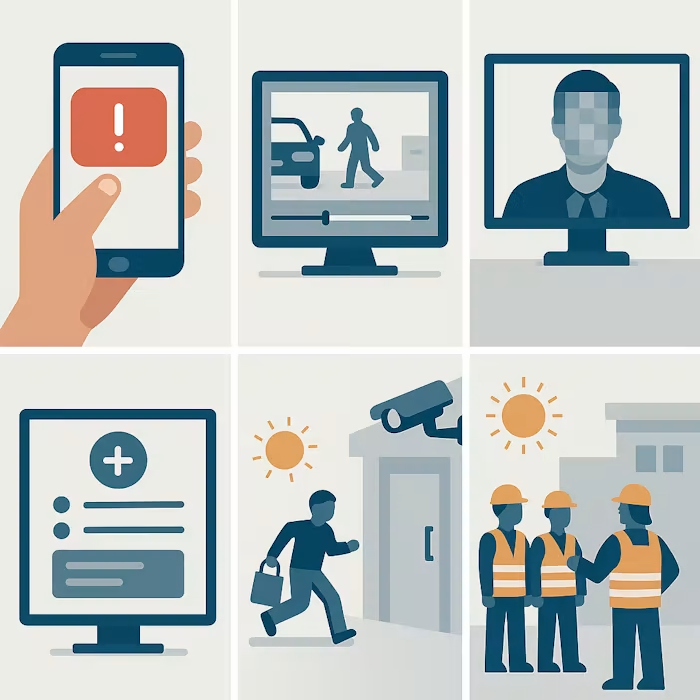
Training That Sticks
Keep it short. Show how to acknowledge an alert, export a clip, blur a face, and file an incident note. Use one page of screenshots. Also, run a mock theft at noon and a safety drill at 8 a.m. Real practice beats a long manual. Teams trust systems they can use. That trust is the hidden edge in AI CCTV vs Traditional CCTV results.
Frequently Asked Questions
Does AI work with my old cameras?
Sometimes yes, via an AI-enabled NVR or VMS. But low-res feeds limit detection quality.
Will AI flood me with alerts?
No, if you tune the rules. Start narrow, review one week of alerts, then widen slowly.
Is AI legal to use in Morocco?
You must follow local privacy rules, post signs, and restrict access. Keep audit logs and train staff. Ask for legal advice for face/plate uses.
Can I link AI CCTV to Microsoft 365?
Yes. Many teams send alerts to Teams channels or shared mailboxes. It helps managers who live in email all day.
What if the internet drops?
Record locally on SD/NVR. Sync bookmarks later. Use 4G/5G backup if the site is critical.
Decision Guide (Fast)
- Need instant alerts and fewer false alarms? Choose AI.
- Need only proof after the fact on a tight budget? Start traditional.
- Multi-site with busy docks or tills? AI first.
- Strict privacy with no network link? Traditional, with a plan to review often.
- Unsure? Run a 30-day AI pilot on the hardest door and compare.
This small experiment makes AI CCTV vs Traditional CCTV a data-backed choice, not a guess.
Comparison Table
| Feature | Traditional CCTV | AI CCTV |
|---|---|---|
| Real-time alerts | Limited | Strong |
| False alarms | High | Low |
| Monitoring load | Heavy | Light |
| Evidence search | Manual | Smart filters |
| Storage use | Always on | Event-driven |
| ROI (1–3 years) | Lower | Higher |
Even a five-camera test will show the gap. You will feel it in your phone, not just see it on a spec sheet.
Internal and External Links (add these in your post)
- Internal: ITech Valley service page on Security Camera Installation in Morocco (installation, wiring, setup).
- Internal: ITech Valley blog post on Network VLANs and QoS for CCTV (simple guide).
- External: Link to a well-known security standard or privacy authority overview for signage and logging basics.
These links help readers go deeper and help your SEO score, too. They also support the AI CCTV vs Traditional CCTV topic with trusted references.
Image Ideas with Alt Text
- Photo of a store’s entry with clear lines of sight; alt: “AI CCTV vs Traditional CCTV entry monitoring in Morocco”
- Warehouse lane with forklifts and a visible emergency exit; alt: “Smart CCTV detects blocked exits and hazards in Casablanca warehouse”
- Office reception with badge gate; alt: “Intelligent cameras and access control in Rabat office”
Keep images under 150 KB each for faster pages. Use WebP when possible.
Final Verdict for Morocco
For most modern sites, AI CCTV vs Traditional CCTV is not a tie. AI assists you to make faster decisions, demonstrate compliance and reduce hours spent wasting time. Traditional still has the use as cheap stopgap and simple recorder However, when you play by the risks, feel a need to have evidence whenever it is requested and you believe in a minimal number of nocturnal interventions, an AI should be your choice. It does not just add another screen to watch, but supports your team. Smart alerts and smart storage directly save money because it is more complex to get around and densities are high.
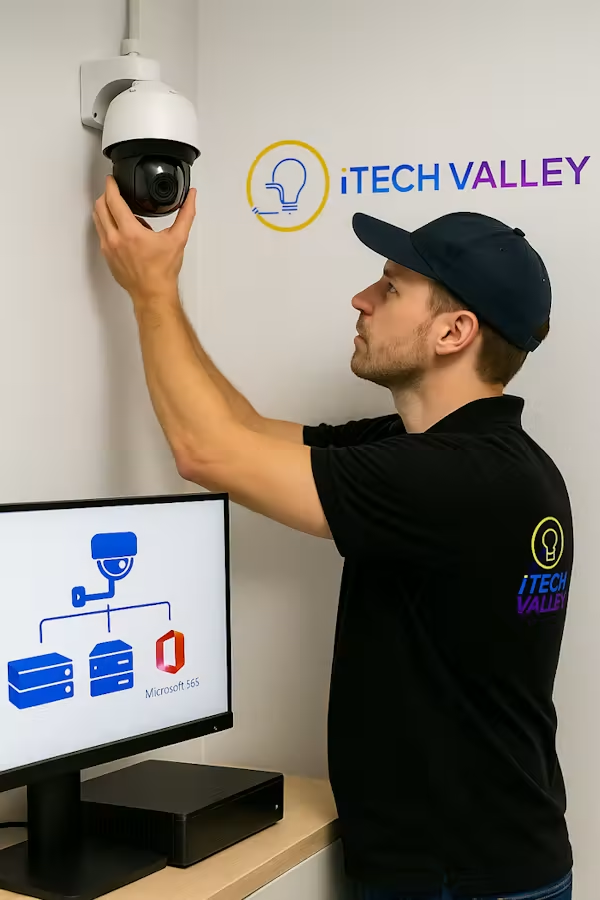
Let ITech Valley Set It Up Right
AI CCTV vs Traditional CCTV is a big choice, but you do not have to guess. ITech Valley offers CCTV system service design, installation and support in Morocco. We are actual site surveys, selecting the lens, configure VLAN and QoS, and tuning alerts.
We integrate cameras with access control and Microsoft 365 to ensure that people receiving the right alerts. We also educate your team, laid down simple policies and back it all with a clear SLA.
Want to have the basic CCTV in a small store? We do that. Require AI in a multi site system? We do that, too. Talk to ITech Valley now and find the right solution to protect your business with a system that meets your objectives and fits your budget- so your cameras can work for you, every day.
